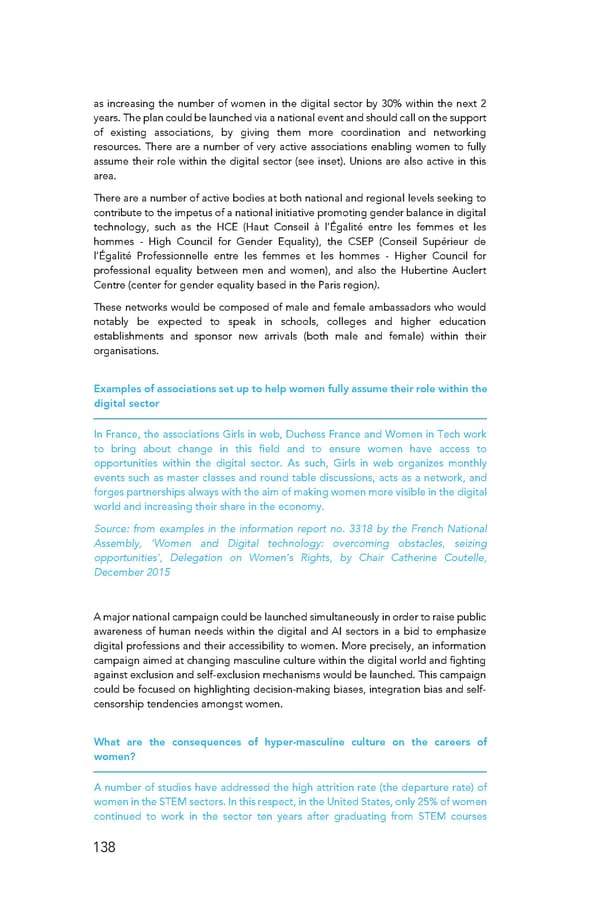as increasing the number of women in the digital sector by 30% within the next 2 years. The plan could be launched via a national event and should call on the support of existing associations, by giving them more coordination and networking resources. There are a number of very active associations enabling women to fully assume their role within the digital sector (see inset). Unions are also active in this area. There are a number of active bodies at both national and regional levels seeking to contribute to the impetus of a national initiative promoting gender balance in digital technology, such as the HCE (Haut Conseil à l’Égalité entre les femmes et les hommes - High Council for Gender Equality), the CSEP (Conseil Supérieur de l’Égalité Professionnelle entre les femmes et les hommes - Higher Council for professional equality between men and women), and also the Hubertine Auclert Centre (center for gender equality based in the Paris region). These networks would be composed of male and female ambassadors who would notably be expected to speak in schools, colleges and higher education establishments and sponsor new arrivals (both male and female) within their organisations. Examples of associations set up to help women fully assume their role within the digital sector In France, the associations Girls in web, Duchess France and Women in Tech work to bring about change in this field and to ensure women have access to opportunities within the digital sector. As such, Girls in web organizes monthly events such as master classes and round table discussions, acts as a network, and forges partnerships always with the aim of making women more visible in the digital world and increasing their share in the economy. Source: from examples in the information report no. 3318 by the French National Assembly, ‘Women and Digital technology: overcoming obstacles, seizing opportunities’, Delegation on Women’s Rights, by Chair Catherine Coutelle, December 2015 A major national campaign could be launched simultaneously in order to raise public awareness of human needs within the digital and AI sectors in a bid to emphasize digital professions and their accessibility to women. More precisely, an information campaign aimed at changing masculine culture within the digital world and fighting against exclusion and self-exclusion mechanisms would be launched. This campaign could be focused on highlighting decision-making biases, integration bias and self- censorship tendencies amongst women. What are the consequences of hyper-masculine culture on the careers of women? A number of studies have addressed the high attrition rate (the departure rate) of women in the STEM sectors. In this respect, in the United States, only 25% of women continued to work in the sector ten years after graduating from STEM courses 138
 For a Meaningful AI - Report Page 136 Page 138
For a Meaningful AI - Report Page 136 Page 138